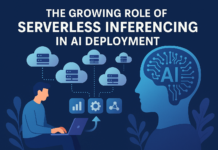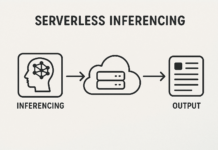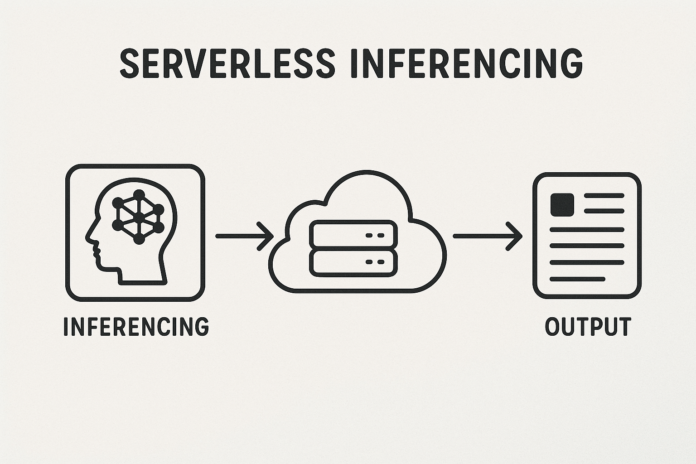In the evolving world of artificial intelligence, delivering fast, scalable, and cost-effective inference has become a critical challenge. Traditional inference architectures, reliant on fixed GPU clusters or dedicated infrastructure, often lead to underutilization, high costs, and operational complexities. Enter serverless inferencing — a transformative approach that is redefining how AI models are deployed and served at scale.
What Is Serverless Inferencing?
Serverless inferencing refers to the deployment of machine learning models on a cloud-native, event-driven architecture that automatically allocates compute resources as needed. Unlike traditional setups where infrastructure is pre-provisioned and maintained regardless of workload fluctuations, serverless inferencing on-demand scales compute power to handle inference requests, providing cost-efficiency and agility.
Key Benefits of Serverless Inferencing
- Elastic Scalability: Handle unpredictable spikes in inference workloads seamlessly. Resources scale from zero to thousands of parallel executions within milliseconds, ensuring consistent low-latency responses without over-provisioning.
- Optimized Cost Model: Pay strictly for compute used during inference execution, eliminating idle hardware costs and improving total cost of ownership for ML deployments.
- Simplified Operations: Abstract infrastructure management away from AI teams. Serverless platforms automatically manage resource provisioning, scaling, and failure recovery, accelerating deployment cycles.
- Accelerated Innovation: Rapidly deploy, iterate, and test AI models in production with reduced lead times and simplified CI/CD integration.
Architectural Components of Serverless Inferencing
Serverless inferencing typically involves a layered architecture:
- Compute Layer: Dynamically spun-up containers or functions provision GPU/CPU resources optimized for inference tasks.
- Orchestration & Auto-scaling: Event-driven triggers (e.g., HTTP requests, message queues) scale compute instances up or down based on demand.
- Model Optimization & Serving: Integration of optimized runtime engines such as TensorRT or ONNX Runtime ensures maximum inference throughput and efficiency.
- Monitoring & Observability: Real-time metrics collection to track latency, throughput, cost-per-inference, and model accuracy.
- Security & Compliance: Container isolation, encrypted communication, and access controls safeguard inference pipelines.
Challenges and Considerations
Despite its advantages, serverless inferencing presents specific challenges:
- Cold Start Latency: Some serverless environments may suffer from initial response lag when spinning up new instances.
- Resource Limitations: Serverless platforms may impose limits on GPU memory or execution time that must be accounted for in model design.
- Complexity in State Management: Stateless design of serverless functions requires thoughtful handling of session data or context for some applications.
Innovations in caching strategies, warm-up approaches, and optimized batching algorithms are actively addressing these concerns.
Use Cases Driving Serverless Inferencing Adoption
- Real-Time Personalization: Retailers dynamically tailor product recommendations during peak traffic without infrastructure overhead.
- Fraud Detection: Financial services scale inference to process sudden spikes in transaction data requiring instant risk analysis.
- Healthcare Diagnostics: Medical imaging AI models handle inconsistent demand spikes with stringent latency and compliance needs.
- Edge AI Integration: Hybrid cloud-edge deployments use serverless inferencing for on-demand compute while maintaining low latency closer to data sources.
The Future of Serverless Inferencing
As AI workloads grow in complexity and volume, serverless inferencing is poised to become the default paradigm for scalable, efficient ML deployment. Advances in GPU as a service virtualization, multi-instance sharing, and AI model compression will further improve performance and cost-effectiveness. Moreover, integration with federated learning and distributed inference architectures will expand its applicability in privacy-sensitive and latency-critical domains.
In Conclusion, serverless inferencing enables enterprises to transcend traditional infrastructure constraints, shifting AI deployment from a capital-intensive endeavor to a flexible, usage-driven capability. Embracing this approach empowers organizations to deliver smarter, faster, and more cost-effective AI-powered applications — paving the way for the intelligent systems of tomorrow.






















































